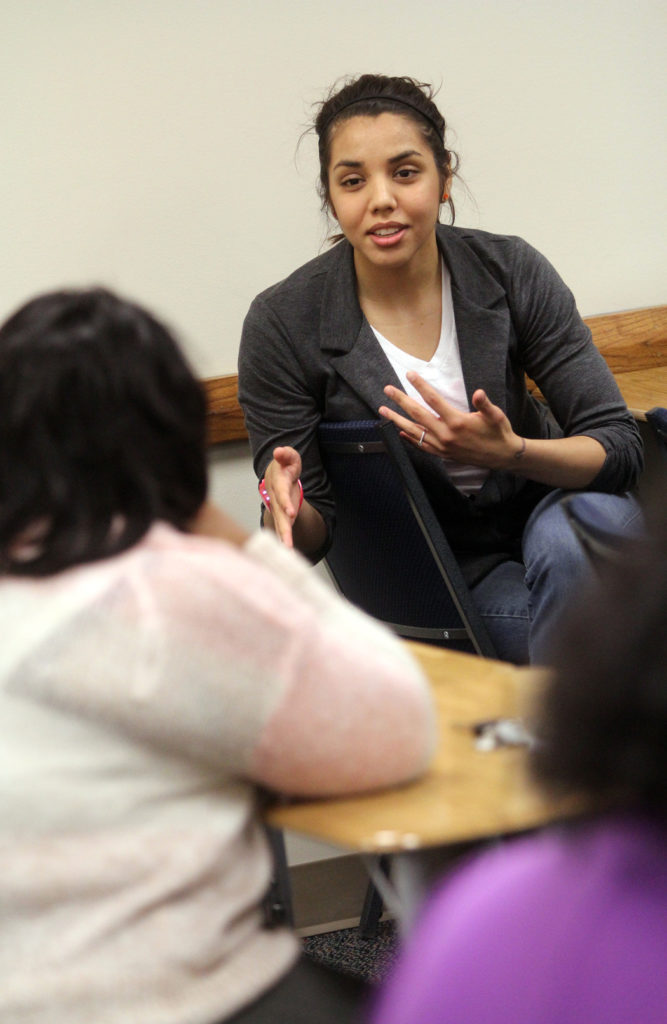
The use of a ‘temperature check’ survey was new to me – but a quick search online revealed that this is a well-used term for gauging situations in organisations – for example, checking the opinions of staff members or service users before taking decisions.
The paper I review in this blog by Cooper and colleagues (2018), makes good use of the ‘temperature check’ analogy in discussing the findings from a telephone survey of 115 local authorities (LAs), about progress implementing ‘Making Safeguarding Personal’ (MSP) in England.
MSP is described as a Department of Health and Social Care (DHSC)-funded, long-term change programme, which was conceived in 2009-10 and led by the Association of Directors of Adult Social Services (ADASS).
The focus is on change to the culture and practice of adult safeguarding – with the aim of improving outcomes for adults thought to be at risk of harm or who have experienced harm in the form of abuse or neglect (Manthorpe et al., 2015).
MSP focuses on developing practitioners’ understanding of what people want to happen or wish to achieve, and encourages practitioners’ to habitually record these desired outcomes. This is a step change from the approach outlined in the earlier ‘No Secrets’ guidance (DH and Home Office, 2000), which was felt by many practitioners to have become rather process-driven and care-management focused. All this chimes well with personalisation and its ideas of empowerment, choice and control – later laid out in the Care Act 2014 and its guidance (see Cooper and White, 2017).
Key findings of the ‘temperature check’ survey were presented in an earlier report by Cooper and colleagues (2016). This blog focuses on their later ideas about what the survey revealed about changes in social work practices and what this means for working with older people in particular. This latter focus is because older people are the largest proportion of adults for whom there are safeguarding concerns raised (63% being over 65) (NHS Digital, 2017). Indeed, ‘Action on Elder Abuse’ (2017) estimated that 413,500 people aged 65 or over experience some form of abuse each year (ranging from neglect, fraud to physical assaults).

The ‘Making Safeguarding Personal’ approach focuses on developing practitioners’ understanding of what people want to happen or wish to achieve, and encourages practitioners’ to habitually record these desired outcomes.
Methods
Cooper and colleagues (2018) describe the aims of the ‘temperature check’ survey as a way of: measuring progress towards full implementation of MSP; gathering information to shape the 2016–17 MSP development programme; and offering reflective coaching and expert advice to safeguarding leads in LAs.
A sample of 117 LAs (out of total 152) across nine regions in England was randomly selected. All but two responded; a response rate that would be envied by many researchers. Semi-structured telephone interviews were conducted by five researchers with safeguarding leads/managers – quite a long conversation evidently as these lasted between one to two hours.
The interviews covered perceptions of: progress towards implementation of MSP; Safeguarding Adults Boards’ partners’ commitment to MSP; measuring and evaluation of outcomes and performance; service user impact; developing and supporting staff; and barriers to MSP.
Results were recorded onto an online survey tool and responses to open questions were collated thematically.
Results
The authors described findings relating to changes to social work practice under three sub-themes, which I replicate below. The authors then use the discussion section to reflect on these findings and the implications of using MSP with older people specifically.
Social worker’s enthusiasm for MSP
Social workers were said to be enthusiastic about changes to their practice when they used the MSP approach and reportedly appreciated: a move from process-led to user-focused practice; involvement of the individual all the way through a case; increased opportunities for them to visit people at home; fewer staff meetings; loosened timescales; more reflective supervision; and increased use of family meetings.
According to the authors, some messages were ‘staggering’, particularly that social workers found people didn’t want more services, and they estimated that half (50%) just wanted an apology and assurance the abuse and/or neglect wouldn’t happen to someone else.

Social workers were enthusiastic about changes to their practice when they took the ‘Making Safeguard Personal’ approach and appreciated a move from process-led to user-focused practice.
Outcomes
Many (69%) of the LAs reported that everyone for whom a safeguarding enquiry was made was now asked what outcomes they wanted; while about a quarter (28%) said this was asked some of the time. Most (85%) LAs had changed their recording systems when implementing MSP. They also mentioned introducing case file audit, quality assurance mechanisms, output data or follow-up questionnaires to evidence the impact of the MSP approach. About three-quarters (approximately 75%) reported that intuitively they thought that MSP was having an impact and based this on evidence such as local case file audits. However, not everyone was confident in the local ability to measure the impact of MSP on practice, with only 5% being totally confident and 25% not confident or not measuring any impact at all.
Organisational support for social workers delivering MSP
MSP had been included in nearly all LAs’ staff training programmes. In many places policies and procedures had been rewritten to embed and reinforce the changes in practice. Despite the difficulty of making changes, IT systems had been updated by 70% of LAs; while another 15% were in the process of completing changes and 15% were just starting.
Not surprisingly, MSP implementation was influenced by how adult safeguarding was organised within a LA, for example, within locality/client groups/specialist leads within teams/or a specialist team (see Norrie et al., 2016). Management and leadership impacted on MSP implementation and may be a weak link – 39% of middle managers were reported to be fully engaged with MSP compared with 50% of senior managers. Other reported barriers were rising numbers of safeguarding referrals, staff shortages, increases in applications for Deprivation of Liberty Safeguards (DoLS), and variable relationships with partner organisations. Some colleagues were reported as being resistant to implementing MSP due to their attachment to pre-Care Act 2014 ways of working and an “I know best” culture.
Older people and MSP
The authors contend that the MSP approach is useful in meeting challenges relevant to working with older people, such as: combating ageism and working with people who lack mental capacity or communication skills. For example, the approach prompts participation of people at risk, even if their decision-making capacity is lacking. There is also a focus on getting to grips with issues through ‘difficult conversations’ or conflict resolution and recovery approaches such as ‘family meetings’ or ‘Family Group Conferences’. At a more philosophical level, human rights and ethics-based practice are fore-fronted.
The authors comment that MSP seems to have been welcomed but can be demanding for social workers to apply to their practice. Indeed it requires practitioners to have confidence and competence in communication skills, the Mental Capacity Act and safeguarding. The authors seem confident that with training, supervision and peer support, MSP can be successfully implemented.

According to the authors, some messages were ‘staggering’, particularly that socialworkers found people didn’t want more services, they estimated half just wanted an apology and assurance that the abuse and/or neglect wouldn’t happen to someone else.
Conclusions
The authors conclude the ‘temperature check’ survey showed that LAs safeguarding leads and managers are enthusiastic about MSP, but implementation and culture change are of course influenced by a variety of factors. There seem to be specific challenges in using MSP in safeguarding work with older adults. The suggestion that the MSP approach appears to be cost-effective is likely to be a further incentive for implementation.

Survey showed that LA safeguarding leads and managers are enthusiastic about MSP, but implementation and culture change are influenced by a variety of factors.
Strengths and limitations
A strength of the paper is the thorough description of the methods, the high response rate, and the use of the ‘temperature check’ survey analogy. The authors make no claim for independence as they have been passionate advocates of MSP.
A limitation of this paper, for me, was focusing on both implications for practitioners and older people, especially as the latter was not the focus of the survey. The focus on older people felt rather exploratory; and I felt this this weakened the paper.
Implications for practice
An implication of the survey findings is that more could be done in practice to address the barriers identified as limiting MSP implementation where possible, such as in relation to LA organisation, leadership and multi-agency working.
Cooper and colleagues also suggest supporting staff to improve their competence in safeguarding could instil greater confidence in using an MSP approach. Support for staff moves the subject on from simply talking about training; as with any innovation, it seems that embedding it is the hard task and it is here that support is needed.

The authors suggest supporting staff to improve their competence in safeguarding could instil greater confidence in using ‘Making Safeguarding Personal’ approach.
Conflict of interest statement
None.
Photo credits
Feature image: Image by PublicDomainPictures on Pixabay
Photo 1: Photo by Almos Bechtold on Unsplash
Photo 2: Photo by Hermes Rivera on Unsplash
Photo 3: Photo by hobvias sudoneighm via Flickr (CC BY 2.0)
Photo 4: Photo by Ross Findon on Unsplash
Photo 5: Photo by Southern Arkansas University via Flickr (CC BY 2.0)
Links
Primary Paper
Cooper A, Cocker C & Briggs M (2018). Making Safeguarding Personal and Social Work Practice with Older Adults: Findings from Local-Authority Survey Data in England. The British Journal of Social Work, 48(4), 1014–1032 doi: 10.1093/bjsw/bcy044. Published by Oxford University Press on behalf of The British Association of Social Workers. Please visit: https://academic.oup.com/bjsw/article/48/4/1014/5059557#119181426.
Other References
Action against Elder Abuse (2017). Elder Abuse is a Hate Crime Let’s Make it One. AEA, London.
Cooper A, Briggs M, Lawson J, Hodson B, Wilson M (2016). Making Safeguarding Personal Temperature Check (PDF). London, Association of Directors of Adult Social Services.
Cooper A & White E (eds) (2017). Safeguarding Adults Under the Care Act 2014. London, Jessica Kingsley Publishers.
Department of Health and Home Office (2000). No Secrets: Guidance on Developing and Implementing Multi-Agency Policies and Procedures to Protect Vulnerable Adults from Abuse (PDF). London, HMSO.
Manthorpe J, Klee D, Williams C, Cooper A (2014). Making Safeguarding Personal: developing responses and enhancing skills. The Journal of Adult Protection, 16(2), 96-103.
NHS Digital (2017). Safeguarding Adults Collection (SAC) — 2016–17, Experimental Statistics, London, HMSO.
Norrie C, Stevens M, Graham K, Moriarty J & Manthorpe J (2017). The Advantages and Disadvantages of Different Models of Organising Adult Safeguarding (PDF). British Journal of Social Work, 47(4), 1205-1223.
